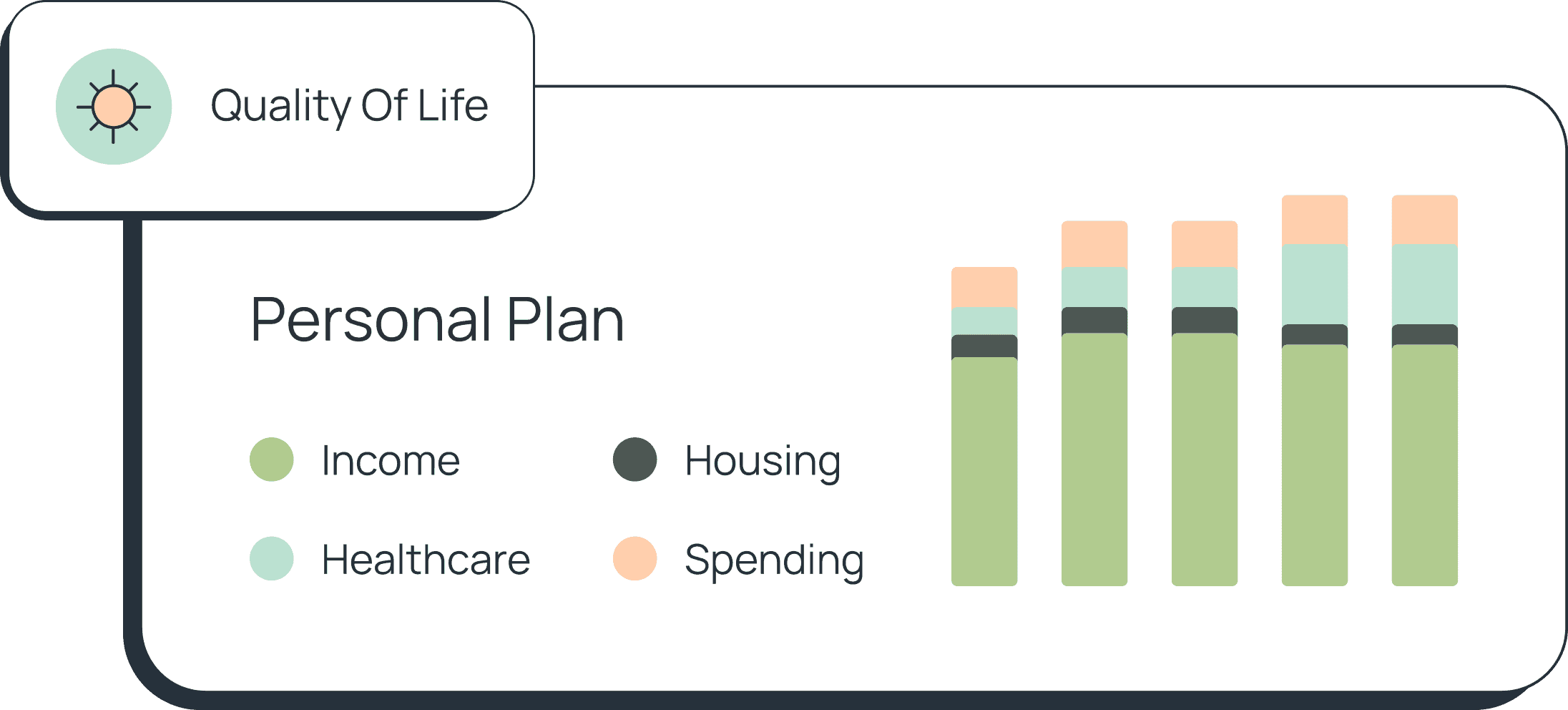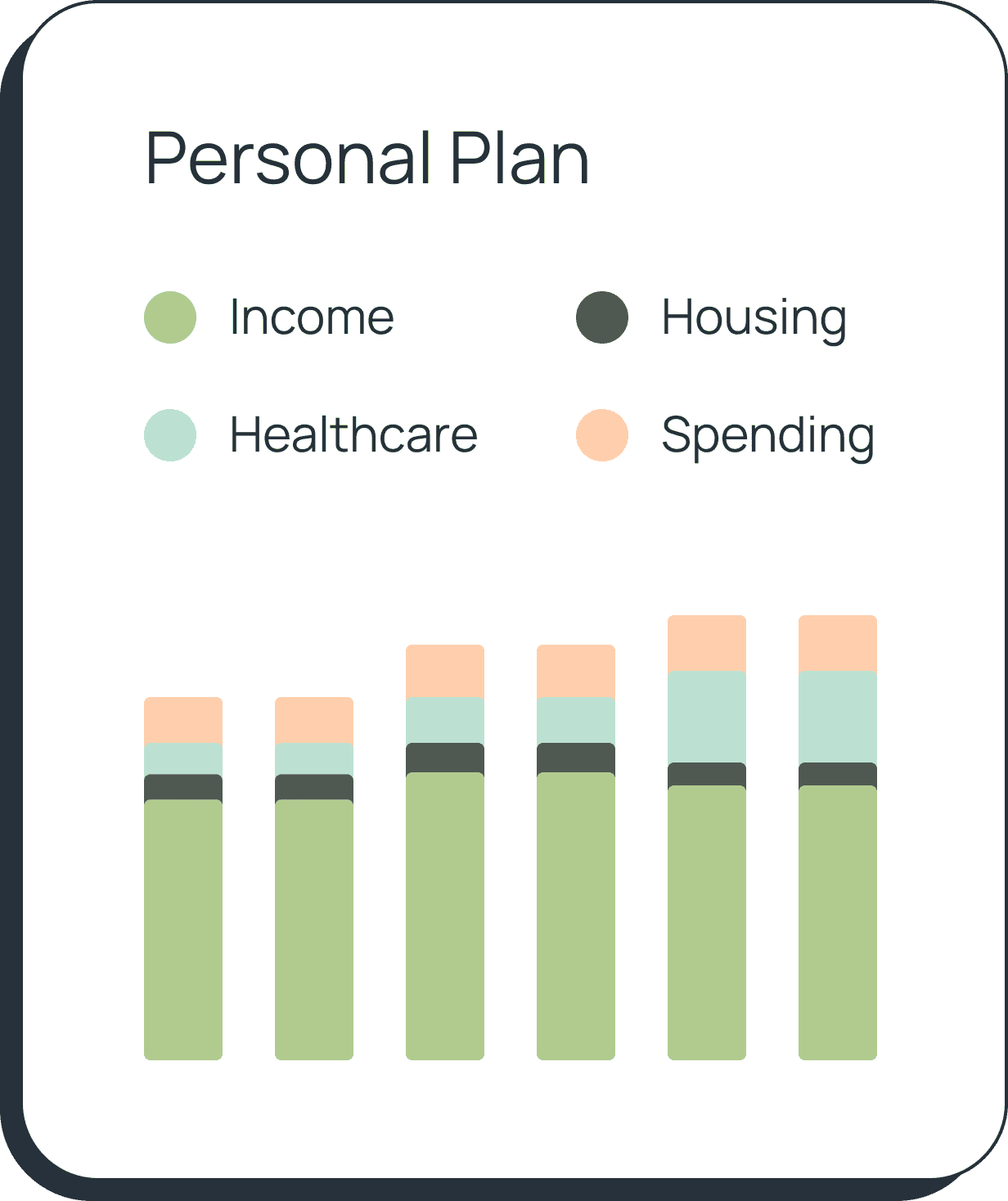Income
Maintaining your lifestyle in retirement goes beyond saving money — it requires a well-thought-out strategy that aligns your goals with your income and future needs. A fulfilling retirement means not only enjoying the life you’ve worked hard to build but also preparing for unexpected expenses, taxes, and shifts in the economy. With the right financial plan, you can create a retirement lifestyle that’s both comfortable and sustainable. This guide will help you navigate the key steps to ensure your golden years are everything you envisioned.

R. Tyler End, CFP®
•
Published January 11th, 2024
•
Updated June 14th, 2024
Table of Contents
Key Takeaways
Plan early by envisioning your ideal retirement and budgeting for long-term goals.
Identify income sources and manage withdrawals strategically to prevent outliving your savings.
Prepare for risks like healthcare expenses and inflation to protect your retirement lifestyle.
When you’re young and working hard, it can be easy to idealize the day you’ll finally be able to retire and enjoy life. But as the date for retirement nears, finances can become more of a concern. Even if you’ve set some money aside, the shift from getting a steady paycheck to living on Social Security and retirement savings distributions can feel daunting.
With some careful planning, you can set a budget that will help you sleep at night.
Envision Your Ideal Retirement Lifestyle
To maintain your lifestyle after retirement, start by imagining what you want your day-to-day life to look like. Will you continue hobbies, travel, or contribute to charitable causes? Visualizing your goals gives you clarity and helps guide your financial planning.
Many retirees desire to maintain their current standard of living while also building new experiences, such as spending time with grandchildren or pursuing personal passions. Knowing what you want will help align your budget and investments toward that vision.
List and Manage Your Income Sources
Living a simple life in retirement means preparing as soon as possible. You should be setting money aside to supplement the Social Security income you’ll receive. You can set up a My Social Security account and estimate your future benefits.
Retirement income often comes from a variety of sources, and each will have different rules on how and when you can access funds. To maintain your lifestyle, take a complete financial inventory. Some common income streams include:
- 401(k) or IRA withdrawals
- Social Security benefits
- Pensions and annuities
- Savings accounts
- Real estate or business income
Tip: Knowing when you’re eligible to withdraw from each account ensures you don’t run into penalties or cash shortages.
Track and Control Spending Carefully
Managing your lifestyle involves more than just income; tracking expenses is equally important. Start with a retirement budget that accounts for:
- Fixed costs like housing, utilities, and healthcare
- Variable costs like travel or hobbies
- Any outstanding debt repayments
Regular budgeting helps you see where adjustments are needed without compromising the lifestyle you want.
Unanticipated Expenses in Retirement
As you’re setting a budget that accounts for retirement lifestyle changes, add a little padding for those unexpected expenses. Here are a few things that could cut into your monthly income once you’re retired:
- Home repairs
- Vehicle repairs
- Uncovered healthcare
- Long-term care for you and/or your spouse
- Child emergencies
- Divorce
- Investment losses
- Loss due to natural disaster
- Victimization by fraud
- Economic downturns leading to inflation
Plan for Taxes On Your Withdrawals
Different income sources are taxed differently. For example:
- Traditional IRAs and 401(k)s: Withdrawals are taxed as ordinary income.
- Roth IRAs: Withdrawals are tax-free if requirements are met.
- Social Security: May be partially taxed based on your overall income.
Strategic withdrawals can reduce tax liability and extend your savings. Consult with a financial advisor to create a withdrawal strategy that minimizes taxes while ensuring steady cash flow.
Prepare for Unplanned Expenses
Unexpected events, such as medical emergencies or long-term care, can disrupt your finances. Consider planning for:
- Healthcare costs: A major expense for many retirees, especially with rising costs for nursing homes and assisted living.
- Long-term care insurance (LTCI): Protects against the risk of depleting your savings due to medical issues.
- Emergency savings: Setting aside funds for unforeseen events ensures you won’t need to compromise your lifestyle in an emergency.
Remember Health Care and Long-term Care Costs
For some retirees, plans for simple living retirement can be easily derailed by health issues. Make sure you know in advance how much Medicare and your Medicare supplement will be. If you have copays and deductibles, be sure to factor medical care into your budget.
Most older adults will need some form of ongoing care before they die. In many cases, this care is short and can even be performed in the home, but it’s an expense worth considering. Even short-term care can cut into your retirement savings.
Use a Phased Retirement Withdrawal Strategy
A phased approach to retirement income ensures that you don’t exhaust your savings too quickly. Think of your retirement in two stages:
Phase one (ages 65-75): Start withdrawing from Social Security, pensions, or IRAs to cover everyday expenses. Phase two (ages 75 and beyond): Focus on long-term investments and savings as your needs evolve and healthcare costs increase.
This strategy ensures that you maintain a steady income across all retirement phases while safeguarding your savings for future needs.
Consider The Rule of 25
Setting up a budget that suits your lifestyle based on income calculations is the best way to plan for retirement. But if you prefer a formula, some experts recommend the “Rule of 25.”
With this rule, you simply multiply your anticipated annual retirement savings withdrawals by 25. If you plan to take $25,000 a year out of your retirement to supplement your Social Security income, for instance, you would multiply 25,000 by 25 to get $625,000. That means you need to have $625,000 in that account by the time you kick off your retirement. This is similar to the commonly used 4% rule.
Review Your Plan Regularly
Retirement planning isn’t static. Life changes, and so do your goals. A yearly financial review allows you to:
- Adjust your withdrawal strategy if market conditions shift
- Rebalance your investment portfolio
- Adapt to changes in healthcare needs or lifestyle priorities
Checking in with a financial professional can help you stay on track and adapt to new challenges as they arise.
Final Thoughts
Retiring to a simpler life is the great American dream. But it can be stressful if you don’t have enough money to live comfortably. We recommend working with a certified financial planner who can take a look at your planned lifestyle and make sure you have enough set aside to cover all your retirement plans.
Share this advice

Tyler is a Certified Financial Planner® and CEO & Co-Founder at Retirable, the retirement peace of mind platform. Tyler has nearly 15 years of experience at leading companies in the wealth management and insurance industries. Before Retirable, Tyler worked as Head of Operations Expansion at PolicyGenius, expanding the company’s reach into new products — turning PolicyGenius into an industry-leading disability and P&C insurance distributor. Before working at PolicyGenius, Tyler worked as Wealth Management Advisor at prominent financial services organizations.
As an advisor, Tyler played an integral role in helping clients define goals, achieve financial independence and retire with peace of mind. Through this work, Tyler has helped hundreds of thousands of people get the financial planning and insurance advice they need to succeed. Since founding Retirable, Tyler’s innovative approach to retirement planning has been featured in publications such as Forbes, Fortune, U.S. News & World Report, and more.
Will I Have Enough?
Maintain Your Lifestyle
Share this advice

Tyler is a Certified Financial Planner® and CEO & Co-Founder at Retirable, the retirement peace of mind platform. Tyler has nearly 15 years of experience at leading companies in the wealth management and insurance industries. Before Retirable, Tyler worked as Head of Operations Expansion at PolicyGenius, expanding the company’s reach into new products — turning PolicyGenius into an industry-leading disability and P&C insurance distributor. Before working at PolicyGenius, Tyler worked as Wealth Management Advisor at prominent financial services organizations.
As an advisor, Tyler played an integral role in helping clients define goals, achieve financial independence and retire with peace of mind. Through this work, Tyler has helped hundreds of thousands of people get the financial planning and insurance advice they need to succeed. Since founding Retirable, Tyler’s innovative approach to retirement planning has been featured in publications such as Forbes, Fortune, U.S. News & World Report, and more.
Free Retirement Consultation
Still have questions about how to properly plan for retirement? Speak with a licensed fiduciary for free.




